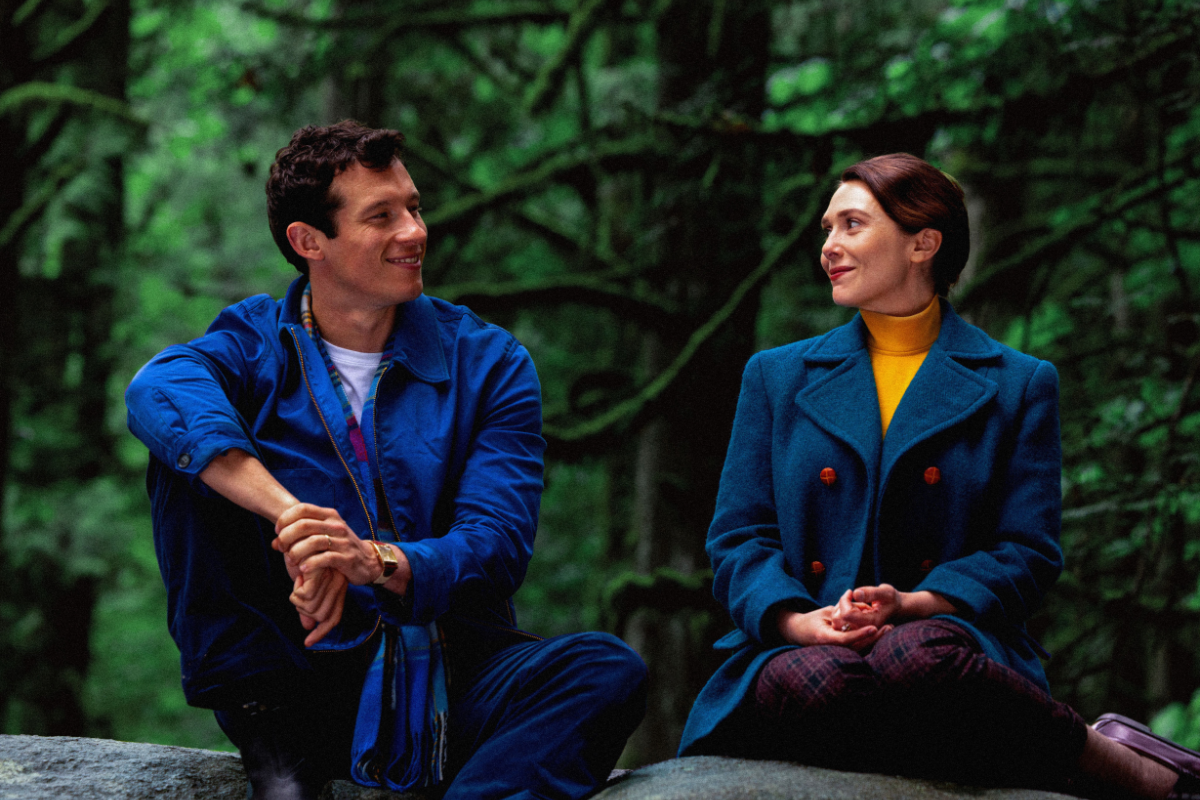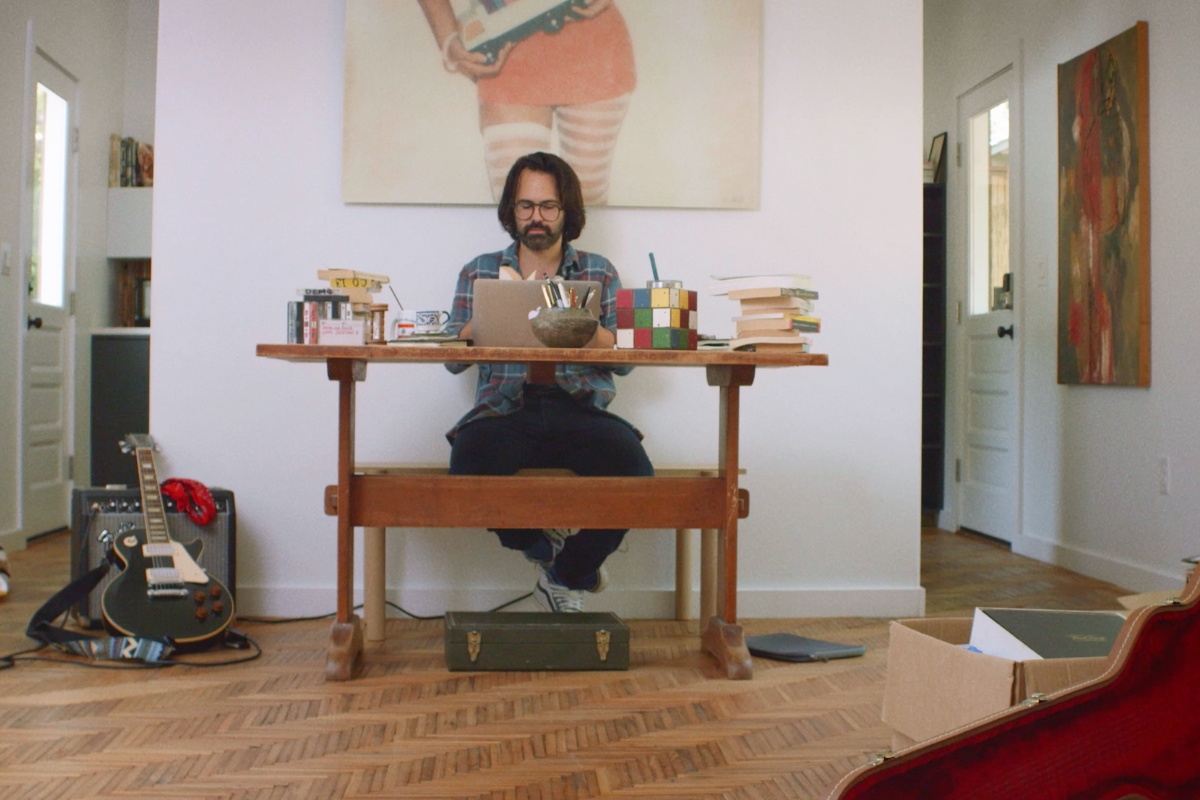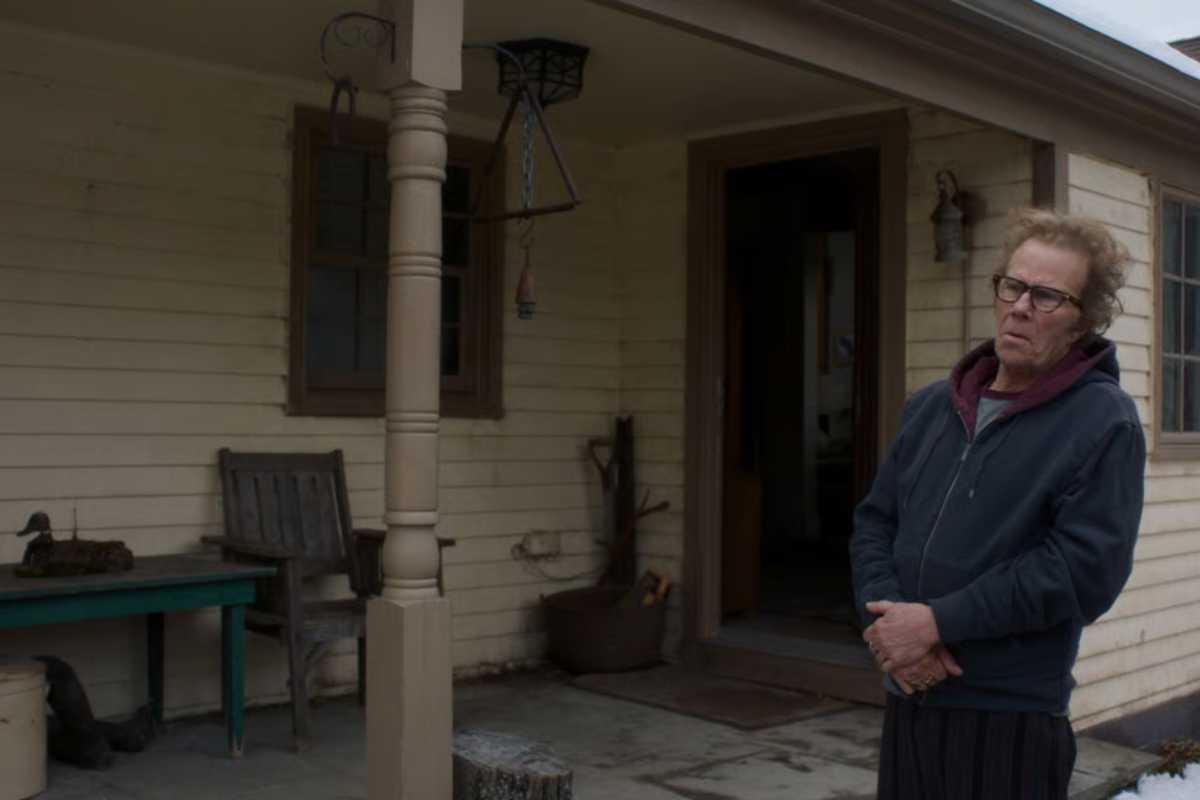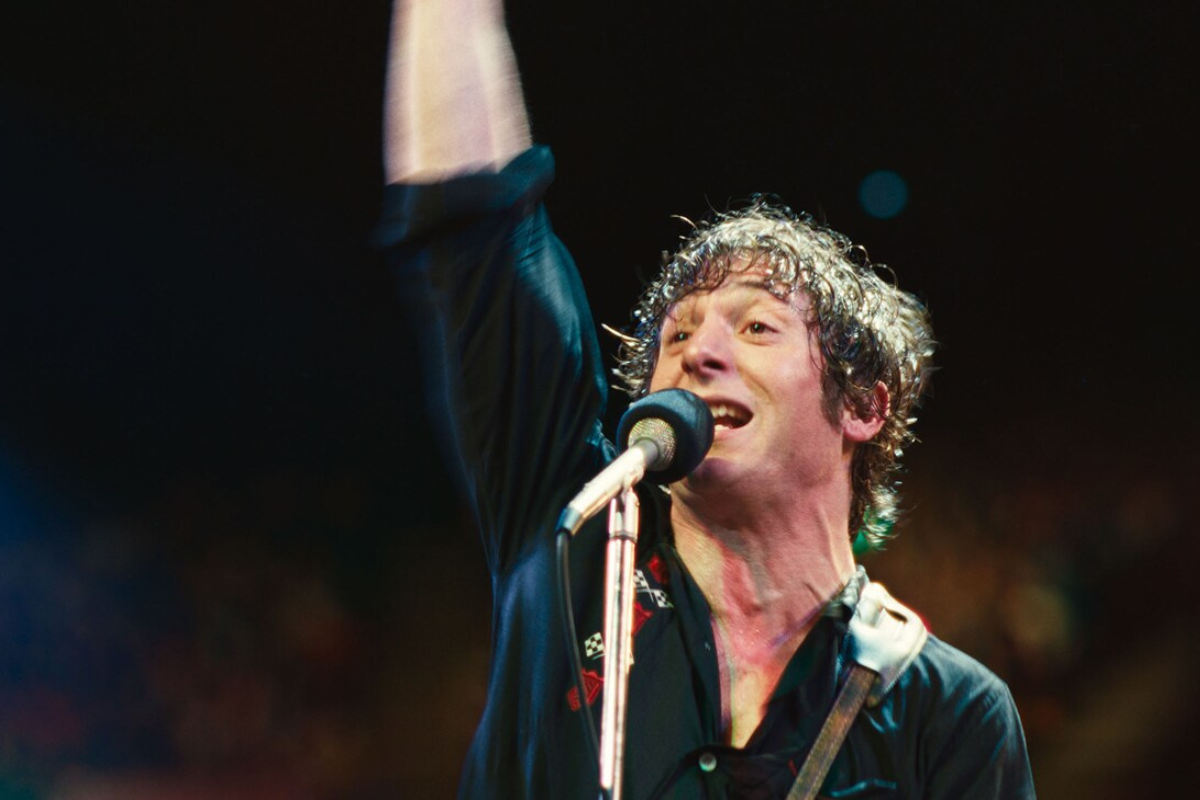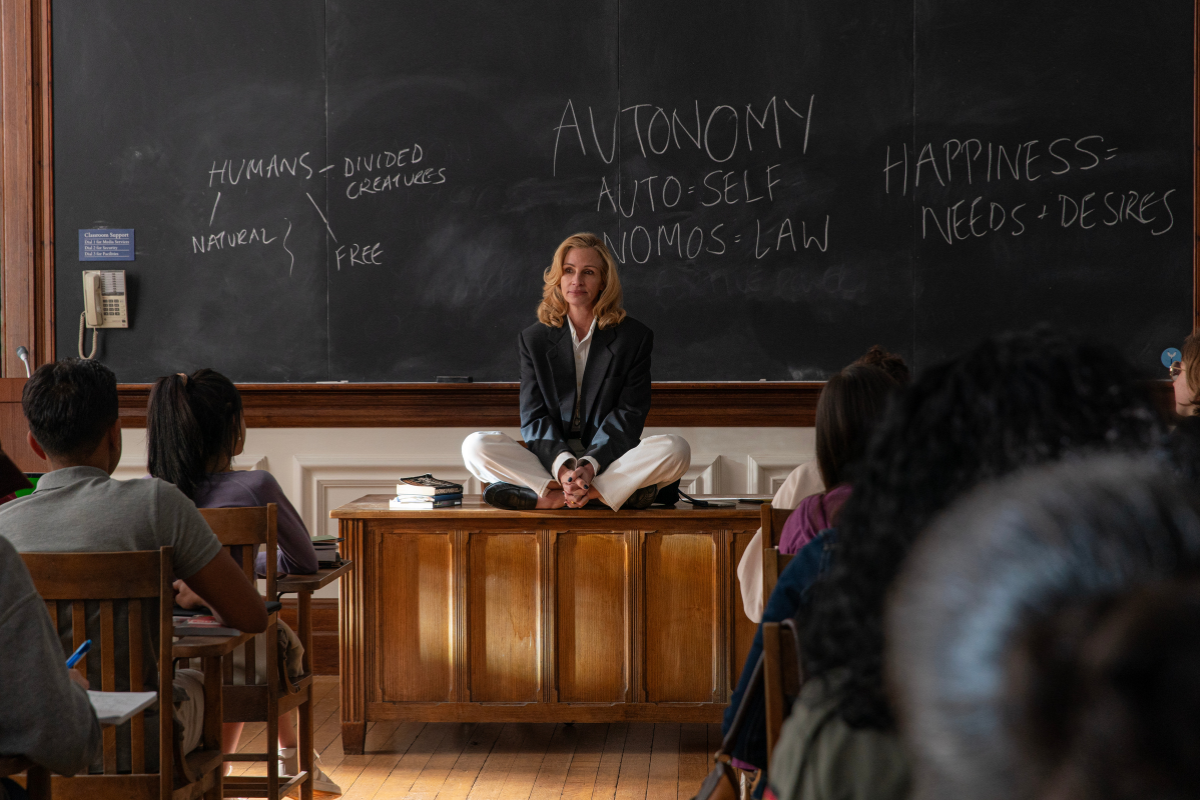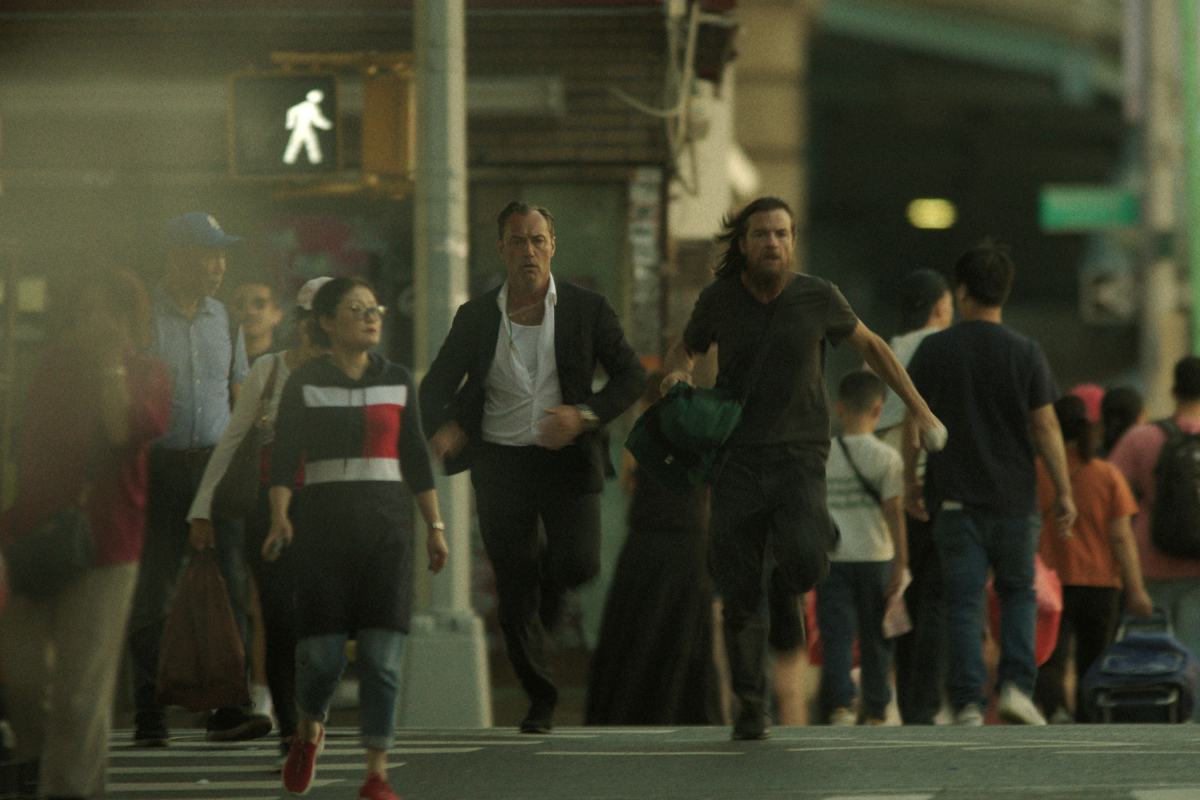Editing with Intent: A Conversation with ‘The Fall of the House of Usher’ Editor Brett W. Bachman
Brett W. Bachman recently spoke with Script about how this dream job landed on his desk, specifically, his Twitter DM’s, what it was like collaborating with Mike Flanagan, why he likes working in the horror genre, and the importance of trusting the process.
From Mike Flanagan, the creator of The Haunting of Hill House and Midnight Mass, a wicked horror series based on the works of Edgar Allan Poe. Ruthless siblings Roderick and Madeline Usher have built Fortunato Pharmaceuticals into an empire of wealth, privilege and power. But past secrets come to light when the heirs to the Usher dynasty start dying at the hands of a mysterious woman from their youth.
Whether you’re a horror or sci-fi fan, or a Nic Cage nut, it’s safe to say you’ve watched this editor’s films within the last five years. And this creative force behind the scenes is Brett W. Bachman. Brett has spent most of his career in the indie-feature space, notably films within the horror-sci-fi-fantasy-drama-bent category and are generally big crowd pleasers. Cut to 2023, and Brett was delivered a dream job – edit side by side one of his favorite filmmakers Mike Flanagan on his new Netflix mini-series The Fall of the House of Usher.
Brett W. Bachman recently spoke with Script about how this dream job landed on his desk, specifically, his Twitter DM’s, what it was like collaborating with Mike Flanagan, why he likes working in the horror genre, and the importance of trusting the process.
This interview has been edited for content and clarity.
Sadie Dean: I’m excited to talk about your latest project, which is The Fall of the House of Usher. How did this across your desk and working with the man, the myth, the legend, that is Mike Flanagan?
Brett W. Bachman: Well, Mike hired me off Twitter, if you can believe it. [laughs] I have been a fan for years, I've been a fan going all the way back to Oculus for several reasons. I mean, first and foremost, I was really drawn to the type of material he was making. Really scary, really well fleshed out characters, deep thematic issues he was tackling with these films. And I remember hearing about this film, that early film, one of the first come out and a lot of the press that was coming out saying he's an editor, or like a reality TV editor turned writer turned director, which as an editor myself I'm like, ‘How the fuck did he do that?’ Like, that's really cool. I want to know all about how he made this leap and how it turned out. And so, I've been following his career for several years, been a fan of the features of, especially the Netflix original series of Hill House and was a huge fan of Midnight Mass.
I was on a movie, and I was checking my social media platforms one night, and there was a little message from Mike Flanagan complimenting my work saying that the last few years there have been a few occasions where he's been watching a movie and he's been taken by the editing. And supposedly he googled that a few times, and my name kept on popping up, which was really cool, really wonderful thing to hear. And then what kind of clinched the deal.
There were two things. Well, the first thing that happened was that he took a general with my director from a film I did called Pig, because he was, I think, our biggest fan. He's seen Pig about four or five times, I think, by this point. And he took a general with my director, Michael Sanoski on that film, and I guess my name popped up during that meeting. And he was, I guess, affectionate and so impressed by what we did in that movie. The second thing that happened was, I've worked with several of his colleagues on some other shorts. So, I did the directorial debut of an actress he's worked with named Karen Gillan, a producer that has worked with in the past named Mali Elfman, I edited a film that she directed and wrote. And then we have mutual friends in the horror community with Spectrevision, Elijah Wood's production company, him and Daniel Noah. They've been friends in the horror world. And so it's just kind of all these things kind of culminated into him looking for the solitary editor for Usher. And I guess it was kind of the right place right time, right history, and the job kind of landed in my Twitter account and he was like, ‘I'm starting this new show. If you've ever want to move over from the feature world into a TV space, we would love to have you.’
Sadie: That's so cool. Jumping into just editing the show. And knowing that your work has been primarily in the feature space, what was it like switching your creative gears as an editor and a storyteller, from film to television? And how much creative room do you when working with someone like Mike and his team to really get the theme and the story all gelling together?
Brett: I think he asked his collaborators to come with intent. He asked us to look at the material, look at the story and interpret it in a way that he may not be expecting. So particularly in regard to Usher, the biggest difference for me, like moving from features into TV world was just the scope of the entire thing. Instead of telling the beginning, middle, and the end, the concrete story and 90 minutes to two hours, you have eight hours to do it. On this particular show, the ensemble cast was much much bigger. I think we are tracking upwards of 15 to 20 characters in this entire thing. And this isn't a conventional TV show, in the sense where I might be editing one episode or editing two episodes, I'm editing everything. That was kind of the ask of me when I was hired on board was to start with building the entire assembly about the entire series.
And then when they would finish shooting, I would take over the director's cut duties for half the episodes with Michael Fimognari, the one of the two directors on the show, and then Mike would re-edit the show, as he saw fit with from my early edits on the episodes he directed. And ultimately, we found there was much less delineation and much less stratification in terms of who was editing what, it basically became Mike would make a few changes on his episodes, but we were still kind of supervising everything together. I was cutting the episodes he directed, he was recutting some of my stuff, like Michael's episodes, doing a pass, it became this really fluid, really easy process of just kind of handing off back and forth. And for someone that grew up in micros, someone who spent the last 10 years of monitoring this filmmaker, it was really a joy.
In terms of back to your original question about the kind of freedom and flexibility he gives us. I think as an editor, you're always kind of balancing two kind of competing ideas when you look at footage as it comes in. You want to of course, look at the script, you want to look at the story as it was intended, you want to find the real source of the emotion in the text, whether that be more upfront or whether that's more on the subtext, you want to try and find the true essence of the story as it was in the text. And think about that context when you're stepping into a scene. But the second thing that I think is a little bit of a competing element as well is that you want to watch the material as it's coming in and have an open mind. You want to be able to react natively to the material, as the actors interpret that text. So that could be a tonal difference from what was on the page, it leaves room open for improv, it may get on set and decide they're going to toss out some of the script in the work with new stuff. So, it's a bit of a balancing act between having a natural reaction to watching dailies, because you're the first audience member and saying, ‘I really liked this, that's maybe not what the director intended. But let's try going for this improv or utilizing this look, or the maybe the tone of the scene slightly changes.’ I mean, as we all know, tone is something that is so specific, and it's subjective. And it's really difficult, I think, to kind of nail that in dialogue on the text from final draft. It's something that requires a lot more reacting to in real time. So, we're also trying to kind of get a sense of what is the vibe of this.
So those two things being said, when I am first editing a scene and when I pitch a scene to Mike after I edit it, there are a few occasions where I will really just kind of go with my gut like, ‘What do I react to as an audience member? How can I interpret this material in the way I feel like somewhere in my heart this is going to be the best reflection of the material as it comes in?’ While still honoring and being truthful to the core message of the material. So, in some cases, that means lifting material. We had one particular scene that I had the preface, Mike, when he came in to sit down, I was like, ‘We've made some changes in this episode. Hold on.’ And Michael, my director and I ended up omitting a pretty big section of a scene, just because we feel like the tone deviated from a bit of what was intended in that scene. There's another occasion that I remember one scene with Henry Thomas, and Mark Hamill on episode four, where Mark Hamill is like giving Henry Thomas's wife's phone being like, ‘We can't unlock this phone. But we feel like there’s incriminating evidence of her having an affair on this phone, can you unlock it?’ And Henry is giving all this wonderful material where he's you stuttering, he's in denial, like, ‘This isn't their phone. I can try to unlock it. It's not hers, she wasn't cheating on me.' And they shot this in so many different ways. But I feel like what worked best was just this wide master shot they got. And they may have spent, you know, half a day shooting all this coverage. But I was like, ‘I don't think you need any of that. You get all the rhythm, all the banter just in this one shot. I think all the nuance and all the subtext you're looking for is there and its present.’
Sadie: Were all of these episodes and scenes shot out of order?
Brett: They were shooting everything all at once. So, you were getting stuff from Episode Eight, next episode five, next episode one, and it was all out of order because of the length that shoot it was and the size of our cast, it all came down to scheduling actors and when the sets could be built as well. So, when we first started, we shot all of Roderick’s office. And then I think the last stuff we shot was all of Kate Siegel's office. So, we have like three days with Kate and her assistants that was at the very, very, very end of the shoot. So, episodes three and episode two, where we have a lot of that stuff in her office was just black filler for like months as we're filling out all the other stuff.
Sadie: That's interesting, because I'm so curious like that that process because I feel like you're watching dailies, and you're trying to cut say episode three, and that's obviously going to influence the episodes that are going to come after that. But if you don't have it shot, I mean, I feel like you have some leeway, like asking for specific coverage. Or running into shots and scenes not matching tonally. Did you guys run into any of that?
Brett: Fortunately, I don't think we really did. I mean, but that is a big challenge. And you're very right, that could have been a very serious issue. But you know, Mike is very good at what he does, and so is his co-director Michael Fimognari. They've done this several times before, this is the fifth mini-series they've done for Netflix. So, I think tthis is pretty typical in terms of how they shoot the series. It was certainly a big concern for me going in to make sure I was tracking the tone and a lot of these character arcs throughout this entire show. But that became I think one of the unintended blessings or one of the elements that was really nice about being the sole editor on the show at first is that you're seeing all this material come in and you're kind of flagging this performance, you might be getting a scene that happens in episode eight. And you know you're gonna have to build up to the scene, like this is the emotional crescendo. So, as you're getting footage, weeks, months down the line that set that scene up, you know to kind of fine a little bit of the. The moments in the performance where you see a character begin to kind of transform and kind of key this emotional development.
And it's two other things as well. It's going back and constantly rereading the scripts, having a sense of what is the framework? What's the blueprint for this show? Where are we going? Being familiar with the material, a lot of editors that say, I just want to react to the material as it comes in and be completely objective. But the size of this and the amount of characters we had, and all the parallel storylines, I don't think that would have really worked for this show. Because you have to be pretty familiar with all these tangential parallel storylines. Otherwise, you're just you're not going to be following a lot of the subtext, a lot of the prospective character arcs, and I think losing out and a lot of the nuances, all the actors are giving in their performances.
And then the second thing, like I said, I think being the one editor on the show, you see everything come in. And so instead this was a situation where there was maybe one or two, or three or four different editors on the show, we may be finding different things in the performances that may not be represented across all the episodes. But being it was just Mike and I, we made sure we could track, like there's a sibling rivalry really present in some of the early episodes between Victorine and Kate's character, and making sure we're tracking moments of looks and glances and building resentment – and that could have gone overlooked because they're a bit more subtle, but making sure we're kind of tracking that stuff in the dailies in our early cuts, I think it was a bit easier, but less people.
Sadie: Emotion is the big key factor here and in anything we do. Having watched your career blossom over the years post-AFI, I’ve noticed you have a great knack of giving scenes space, but also how you utilize sound design and music. What your process behind that? Do you typically have temp music in place or do you work directly with the sound and music team ahead of time?
Brett: Oh, well, thank you first and foremost. I certainly try and do a lot of sound work before and a relative amount of polish before people come and they watch these early edits. The truthful answer is every single director is different for their preference. In regards to the use of temp music, and how presentational do you want these first edits to be, how much sound, how much graphics - there are some directors I've worked with that really relish in having a pretty blank slate in terms of a soundscape in terms of music and sound design or more designed elements.
Mike is a particular director that I think likes to see scenes with intent. So that means not only an edit that is not necessarily rough, but has degrees of polish to it, and it feels like you're presenting, ‘I feel proud of this.’ It's not rushed together. It's not an assembly, ‘I'm presenting this to you.’ And if you like it, we can say the edit is locked. I think he likes his collaborators to come at him with that amount of thought going into what they're presenting him. So, he's kind of similar in regards to a soundscape as well. He likes edits to be pretty built out in terms of soundscape in terms of sound as temp sound, whether that be something more evident, like lightning crashes and stings, if it's more of a horror driven scene, or in the case of like “The Masque of the Red Death” in episode two, really fleshing out a lot of stuff in the background for more of the subtle elements with like breaths and gasp and walla.
In regards to music, becasue Mike has a very long collaboration with the Newton Brothers, he usually has a pretty keen sense of what he's looking for when we get into material. He's had a briefing session or a lot of dialogue with Andy and Taylor from the Newton's for what he's going for. So specifically in regards to Usher, one of his big mantras was like, ‘This is not a sentimental show. I do not want the music to lead any emotion. I don't want to feel saccharin or sad or sappy. This is a satire. I don't want the filmmakers to feel like we're asking the audience to build sympathy for these individuals. I want them to connect with them, but I don't want any kind of trappings have sentimental music that kind of feel sweet or tender.’ So, right off the bat, he was like, I definitely want to hear music, but I want to hear something propulsive. And I want to feel something that the show is moving in a kind of a breakneck pace with the music.
So, we would use a lot of I think Philip Glass was the reference he used early on for me and for the Newton's to kind of get a sense of these relentlessly, chugging strings and piano. We use a lot of stuff from Magnolia as well, because it has these long sections of music that are just propulsive and keep on going. And there's one section in episode one that we directly use Magnolia as a reference - it's really this relentlessly changing and evolving music cue that I think goes on for like eight minutes.
So, he's a director that likes to hear temp, because he wants to kind of hear the intent of what are you going for in the scene? And then, of course, there's a lot of scenes that I would not be sure, honestly, as much as I want to present to him that I feel that I'm pretty confident about my philosophy I'm not sure about. And so, there's a few scenes that I will intentionally leave dry, because I'm not sure the tone he wants to go with this, or maybe it's very subjective, and I will either leave it blank, or vice versa, maybe I'll give him a scene that contains a few different options. So, there was a few scenes that I think I just layered in like two or three different tracks of music, and it was like, maybe you want music to counter this, maybe you want music to kind of be more in step with a lot more of the external elements of the dialogue. Or maybe you want to play counter to that and counter the emotion, are people yelling, maybe the music or something else.
Sadie: You've worked in a lot of different genres, but mostly the horror space these days, what is it for you as an editor and a storyteller that really attracts you to that genre?
Brett: I think horror is really fun. [laughs] I love being in a crowd watching a horror film and sensing the emotional engagement in it, which is one of the saddest things about Usher is that we barely get to see it with the audience. We are really fortunate that we got to play two episodes of Fantastic Fest. So, I got to see episode one and episode two with a crowd and hearing them react to “The Masque of the Red Death” in real time was pretty cool.
But having the toolkit is fun. It's evoking an emotion, and evoking a sense of dread, evoking a sense of tension and suspense, having a goal post in mind to achieve these particular emotions is something that's really fun. I love working outside the horror genre as well. But there's something that it's kind of like a thrill ride, in the sense when you get into a theater, and you have people that are really riding the emotion and what you've made. And the genre community is so full of fans that are so receptive to a lot of the work that's made as well, it's really fun to and really rewarding to kind of see that feedback come back to you. So those are some of the first things I think that I love about working in the genre.
In terms of the films themselves and the stories themselves, I love that you can explore really kind of complex and deep thematic issues in horror that may be a bit more difficult to achieve than straight drama or even a comedy. I mean, you can certainly do a lot in science fiction as well, but horror is just so ubiquitous and out there and you can make a film really about anything that challenges your fears and your preconceived notions. And you can have as much drama and nuance and subtext in an award campaign film than you can have in a $5 million indie horror piece. So, I love the versatility as well.
Sadie: Any advice for those when it comes to the editor and director creative collaboration?
Brett: I think the thing that's really helped me is to frame my responsibility and frame my position is to be a helper and to try and be a collaborator as opposed to a department head, you certainly have a lot of responsibilities as a department head as an editor. But I've found that my best work experience has come when I'm sitting with an individual, whether it be director, producer, and I have a goal to help that person achieve what they're looking for. Not only do I think it leads to a better finished product, but I think it changes the attitude of that workday of the of that working relationship. I think it makes work much more fun to come to, if they feel like you're there to support them. But also, it changes me as an editor, my relationship and my expectations about coming to work every single day, where I feel like I'm still giving, I'm still contributing, but I'm doing so in partnership with somebody else. It's not editor, director, it's editor and director. It's trying to find commonality and similarities and trying to find a shared voice between the two of us.
Earlier in my career, I think I had a more difficult time trying to find a wavelength or rhythm that worked well for me. And there was a point, it was actually at AFI, where we had a panel of famous editors come one day, and this editor by name of Sally Menke was on the panel who has edited a lot of films are Quentin Tarantino. And I remember they opened the floor to questions at one point, and I was like 25 years old. And I thought it would be a big laugh, and I remember asking, ‘What do you do when your director is just wrong?’ And got a big laugh out of like all the fellows, and they loved it. And it was all very funny. But the only people that were not laughing in the room were all the professional, legendary editors on the panel. And then Sally, she's like, ‘I will take that question.’ And she said, ‘Well, first of all, your director cannot be wrong. So, if you are making it a you versus them thing, at the onset, I would ask are you even cut out for this job? It's not about you. It’s not about your director being wrong and you being right. Because that's already an adversarial, antagonistic relationship that's already you versus the director. It should be you working with the director and they're always going to be right. Try and find what works for them and support them.’ And now I hear that, that makes total sense. But 25-year-old, cocky, egotistical, arrogant, Brett was like, ‘Oh, my God, like, I've just been dressed down in front of 200 of my peers and in front of my film editor.’ But it was wonderful advice.
Sadie: I’m curious, now that you’ve had a handful of projects under your belt, was there ever a time that a scene gave you a moment of pause and think “I bit off more than I can chew?” or on the flip side, come out of a session totally elated and proud of what you had just accomplished?
Brett: It's a great question. I don't actually think I've gotten that one before I think truth be told. I think every single job I do, you get to a point where you get that first cut, and you get that director's cut and you might be two and a half hours long on a first cut, or it might be the tone is all off. I think every single assembly edit, I look at as much work as I put into it, which can be anywhere from two months on a conventional feature, or on like a low budget indie or on Usher five months of editing and looking at assembly edit, every single assembly, every single early cut, has things that just kind of usually bump you off.
And that's just because you work on this thing out of context in the same way when you write a first draft. I think it's really rare to kind of sit down and look at the first draft and be like, ‘Oh, yeah, everything flows, everything fits.’ It's the same with editing as well, you're editing scenes out of context, you're editing a love scene next to an action scene or next to a horror scene on any given day. So, your mind has already kind of flushed with different tones and paces. And it isn't until you put all that up, and you look at that material and watch down that first edit that you're like, ‘This doesn't flow or like this, the emotional continuity is not there, or like that storyline is not tracking, this isn't tracking.’ And so, our job is just a constant process of revising, trying things out.
And I think one of the big lessons I learned that I have to keep on reminding myself is to give myself permission to fail. These early cuts are not going to be the final cuts, they're not going to be the movie that the audience sees, because every single edit has things that need to be tweaked. And that's typically tone, that's typically pace, that's typically bringing out the best of an actor's performance that maybe I didn't see on the day when I was first watching these dailies. It's all these factors kind of in this big blender. And so, it's a constant process of editing, watching, observing, taking notes, and going back in and just learning to kind of trust the process of experimenting, constantly revising, trying to find that sense of balance between a story and performance and tone. And then all of these factors.
I think I was really intimidated by some of my early shows. And some of my early projects where I was like, it's not there in the first cut, like things are so often there's this total imbalances and weird piece issues. And an actor, I don't like what they're doing there. And it isn't until I got a few features down the line that I was like, this is normal for everybody, like $4 million dollar films have this problem. $200 million films have this problem of just getting there. So, I think trusting the process and trusting just the revision and the editorial process of going through gradually, incrementally that they'll get better every single time is something I had to kind of learn and trust myself that we're going to get there. It's not going to be great week one or maybe not even week seven. Hopefully, you'll be better by week seven, but learn to trust that process.
The Fall of the House of Usher is now streaming on Netflix.
Learn more about the craft and business of screenwriting and television writing from The Writers Store!
Sadie Dean is the Editor of Script Magazine and writes the screenwriting column, Take Two, for Writer’s Digest print magazine. She is also the co-host of the Reckless Creatives podcast. Sadie is a writer and filmmaker based in Los Angeles, and received her Master of Fine Arts in Screenwriting from The American Film Institute. She has been serving the screenwriting community for nearly a decade by providing resources, contests, consulting, events, and education for writers across the globe. Sadie is an accomplished writer herself, in which she has been optioned, written on spec, and has had her work produced. Additionally, she was a 2nd rounder in the Sundance Screenwriting Lab and has been nominated for The Humanitas Prize for a TV spec with her writing partner. Sadie has also served as a Script Supervisor on projects for WB, TBS and AwesomenessTV, as well as many independent productions. She has also produced music videos, short films and a feature documentary. Sadie is also a proud member of Women in Film.
Follow Sadie and her musings on Twitter @SadieKDean


